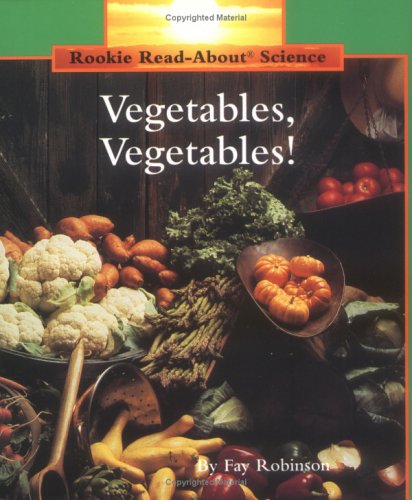-
The Chicken or the Egg?
Allan Fowler
Paperback (Childrens Pr, Sept. 1, 1993)A brief look at the physical characteristics, breeds, and habits of chickens and at how modern poultry farms produce eggs and chickens G
G
-
It's a Good Thing There Are Bees
Lisa M. Herrington
Library Binding (Children's Press, Sept. 1, 2014)The sound of a buzzing bee can send many people running inside. But bees play a very important role in their ecosystem.Bees pollinate flowers and also provide useful products, such as honey and beeswax. The well-organized chapters help readers (Ages 6-7) identify key details. The illustrations and text features such as captions and bold print help students navigate the text while the photographs add clarity and enable students to better understand the text. K
K
-
You Can Use a Compass
Lisa Trumbauer
Paperback (Childrens Pr, March 1, 2004)Simple text and photographs describe and illustrate how to use a compass to find one's way on land, at sea, or in the air. G
G
-
Vegetables, Vegetables!
Fay Robinson
Paperback (Children's Press, March 1, 2001)Discover various kinds of vegetables,which part of the plant they come, and how they are grown and used.The natural world comes alive for young readers (Ages 6-7) with Rookie Read-About "RM" Science! With striking, full-color photos and just the right amount of text, this series immediately involves young readers as they discover intriguing facts about the fascinating world around them. G
G
-
Icebergs, Ice Caps, and Glaciers
Allan Fowler
Paperback (Children's Press, March 1, 2001)Discover the characteristics, size, and movement of icebergs, ice caps, and glaciers.The natural world comes alive for young readers (Ages 6-7) with Rookie Read-About "RM" Science! With striking, full-color photos and just the right amount of text, this series immediately involves young readers as they discover intriguing facts about the fascinating world around them. G
G
-
Seed to Plant
Lisa M. Herrington
Paperback (C. Press/F. Watts Trade, March 1, 2014)Nothing says summer is here like the big, bright blossoms of a sunflower!In this book, readers (Ages 6-7) learn how this towering plant starts out life-as a small black seed. They also learn about the different parts of the plant and how they all work together to help it grow and thrive. J
J
-
Turtles Take Their Time
Allan Fowler
Paperback (Childrens Pr, Jan. 1, 1993)A simple description of the physical characteristics and behavior of turtles L
L
-
The Sun Is Always Shining Somewhere
Allan Fowler
Library Binding (Childrens Pr, April 1, 1991)Examines the sun in the context of other, more distant stars and discusses the night sky and movement of the earth G
G
-
It's a Good Thing There Are Earthworms
Jodie Shepherd
Library Binding (Children's Press, Sept. 1, 2014)Discover that earthworms aren't just yucky, but are necessary to keeping soil healthy.People used to think earthworms were just garden pests. Others thought they were just plain yucky! Earthworms are also food for birds, frogs, and other animals. The well-organized chapters help readers (Ages 6-7) identify key details. The illustrations and text features such as captions and bold print help students navigate the text while the photographs add clarity and enable students to better understand the text. K
K
-
North, South, East, and West
Allan Fowler
Library Binding (Childrens Pr, March 1, 1993)Gives a simple explanation of the four main directions and tells how to use the sun to determine direction G
G
-
So That's How the Moon Changes Shape
Allan Fowler
Library Binding (Childrens Pr, Oct. 1, 1991)A simple explanation of the moon and why it changes shape throughout the month G
G
-
Recycle That!
Fay Robinson
Paperback (Childrens Pr, Sept. 1, 1995)Explains what recycling means, tells why it's important not to be wasteful, and shows how old cans, bottles, and paper can be made into new products K
K